Dragon Wing Begonia, scientifically known as Begonia x hybrida, is a spectacular and popular flowering plant prized for its unique characteristics. This begonia variety is a hybrid of Begonia coccinea and Begonia aconitifolia, and it boasts vibrant, dragon-wing-shaped leaves that make it a standout addition to any garden or indoor plant collection.
Key Features of Dragon Wing Begonia:
- Foliage: The leaves of Dragon Wing Begonia are large and asymmetrical, resembling the shape of dragon wings, which is how it got its name. The leaves are typically bright green with a glossy finish, making them highly attractive.
- Flowers: While Dragon Wing Begonia is primarily grown for its foliage, it also produces clusters of pendulous, red or pink flowers. These flowers can add a pop of color to your garden or indoor space.
- Size: Dragon Wing Begonias can vary in size but generally reach heights of 12 to 18 inches, creating a compact, bushy appearance.
- Versatility: This begonia variety can be grown as both an outdoor plant in temperate climates and an indoor plant. Its adaptability makes it a favorite choice for many gardeners.
Tip: Dragon Wing Begonia is an excellent choice for beginners due to its low-maintenance nature and resilience. It’s a versatile plant that can thrive in various conditions.
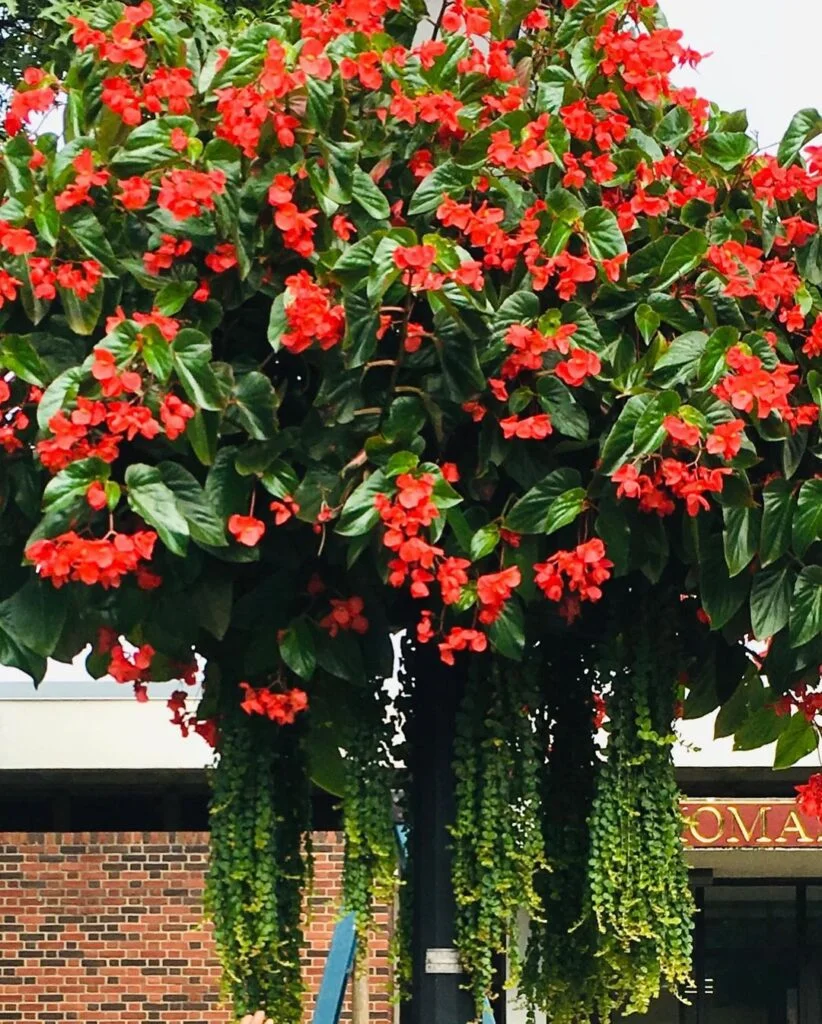
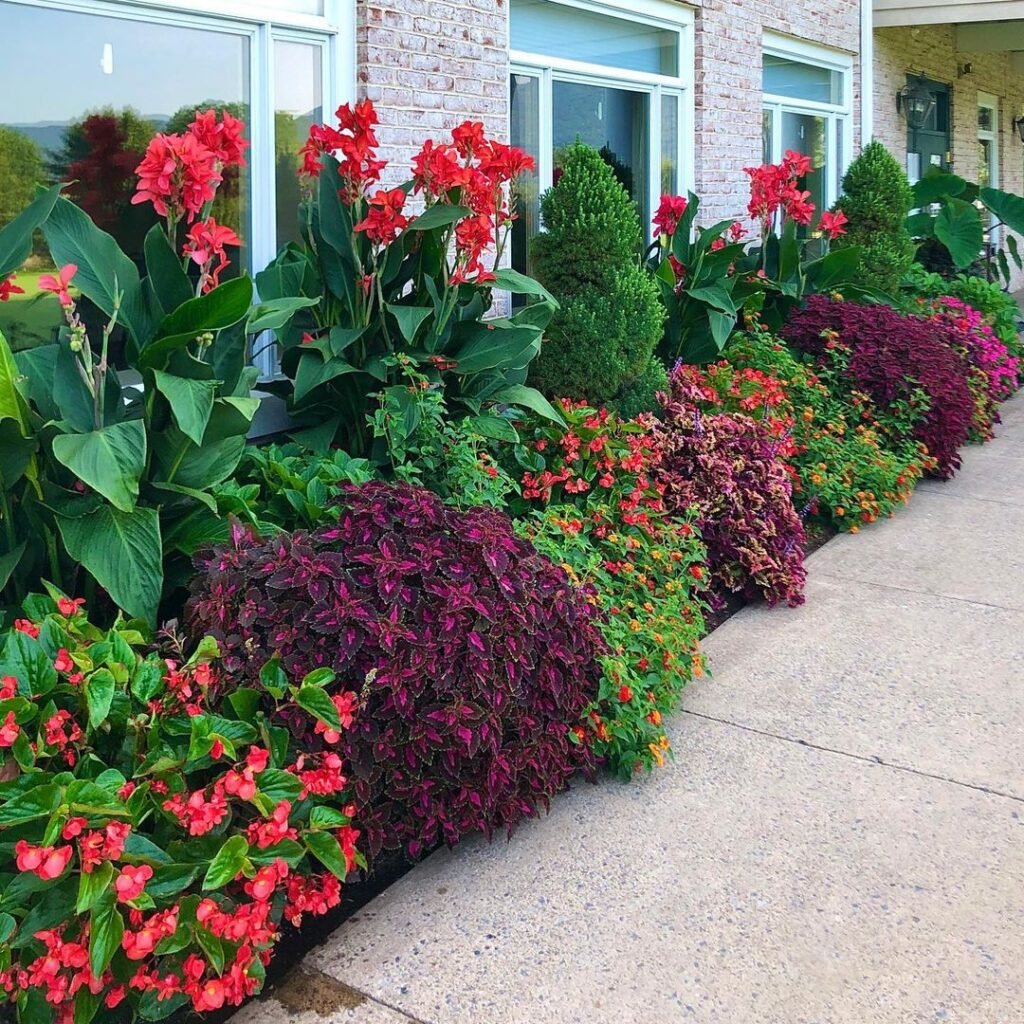

Genus Species
Dragon Wing Begonia belongs to the genus Begonia, which is one of the most diverse and extensive genera in the plant kingdom. Within the Begonia genus, there are thousands of species and numerous hybrids, each with its own unique characteristics.
Key Information about the Genus Begonia:
- Diversity: Begonia encompasses a wide range of species, from small, delicate varieties to large, showy hybrids like Dragon Wing Begonia. This diversity offers endless options for plant enthusiasts.
- Family: Begonia belongs to the Begoniaceae family, which includes flowering plants renowned for their ornamental value.
- Geographic Distribution: Begonia species can be found in various regions around the world, with a significant presence in tropical and subtropical areas.
- Cultivation: Due to their striking appearance and adaptability, Begonia plants are popular choices for both indoor and outdoor gardening.
Tip: Exploring other Begonia species can be a rewarding experience for plant enthusiasts, as many offer unique foliage and flower characteristics, making them stand out in any garden.
Dragon Wing Begonia Appearance



The visual appeal of Dragon Wing Begonia is truly captivating, and its distinctive appearance is a key reason why it’s sought after by gardeners and plant lovers. Let’s delve into the specific features that make this begonia variety visually stunning.
Notable Aspects of Dragon Wing Begonia’s Appearance:
- Foliage: The leaves are the focal point of Dragon Wing Begonia’s appearance. They are large, broad, and have a deep green color with a glossy texture. The leaves are also characterized by their unique asymmetrical shape, resembling dragon wings. The red or pink undersides of the leaves provide a striking contrast when the foliage sways in the breeze.
- Flowers: Dragon Wing Begonia produces pendulous clusters of small, tubular flowers that can be red or pink. These flowers add a touch of elegance and color to the plant.
- Size and Growth: This begonia variety typically forms a bushy, compact shape with arching stems, creating a lush, rounded appearance. It can reach a height of 12 to 18 inches, making it an excellent choice for both ground cover and container gardening.
- Container Planting: Dragon Wing Begonia’s appearance makes it a perfect candidate for hanging baskets, containers, and window boxes, where the cascading foliage and charming flowers can be showcased effectively.
Tip: For a more dramatic display, consider planting Dragon Wing Begonia alongside other complementary foliage plants to create an aesthetically pleasing garden or container arrangement.
Not the plant for you? Check out my full list of 78 Types of Begonia!
How to Grow Dragon Wing Begonia
Cultivating Dragon Wing Begonia is a rewarding experience, but it’s essential to provide the right care to ensure its healthy growth and vibrant appearance. Here’s a comprehensive guide on how to grow Dragon Wing Begonia successfully:
Planting and Growth Tips:
- Location: Choose a location with well-draining soil that receives partial to full shade. While Dragon Wing Begonias can tolerate some sun, they thrive in shadier spots. If you’re planting them indoors, ensure they get indirect sunlight.
- Soil: Dragon Wing Begonias prefer soil that is rich in organic matter and slightly acidic. You can amend your soil with compost to enhance its quality.
- Planting: When planting outdoors, space the begonias about 18 inches apart to allow for their bushy growth. If you’re using containers, make sure they have drainage holes to prevent waterlogging.
- Watering: Keep the soil consistently moist but not waterlogged. Watering early in the day is advisable to allow excess moisture to evaporate, reducing the risk of fungal diseases.
- Mulching: Apply a layer of mulch around the base of the plants to help retain soil moisture and suppress weeds.
Tip: To encourage bushier growth, pinch back the tips of your Dragon Wing Begonia periodically. This will also promote the development of new shoots and more vibrant foliage.
Feeding and Fertilization:
Dragon Wing Begonias benefit from regular feeding during the growing season:
- Use a balanced, water-soluble fertilizer with an NPK ratio of 10-10-10 or 20-20-20.
- Apply fertilizer every 4-6 weeks during the growing season (spring to early fall).
- Be cautious not to over-fertilize, as excessive nutrients can lead to leggy growth with fewer flowers.
Overwintering and Cold Protection:
- In regions with frost, bring your Dragon Wing Begonias indoors before the first frost, or they can be treated as annuals.
- If you prefer to overwinter them, reduce watering and allow the plant to go dormant in a cool, dark place, such as a basement or garage, maintaining a temperature between 45-55°F (7-13°C).
Dragon Wing Begonia Quick Care Overview

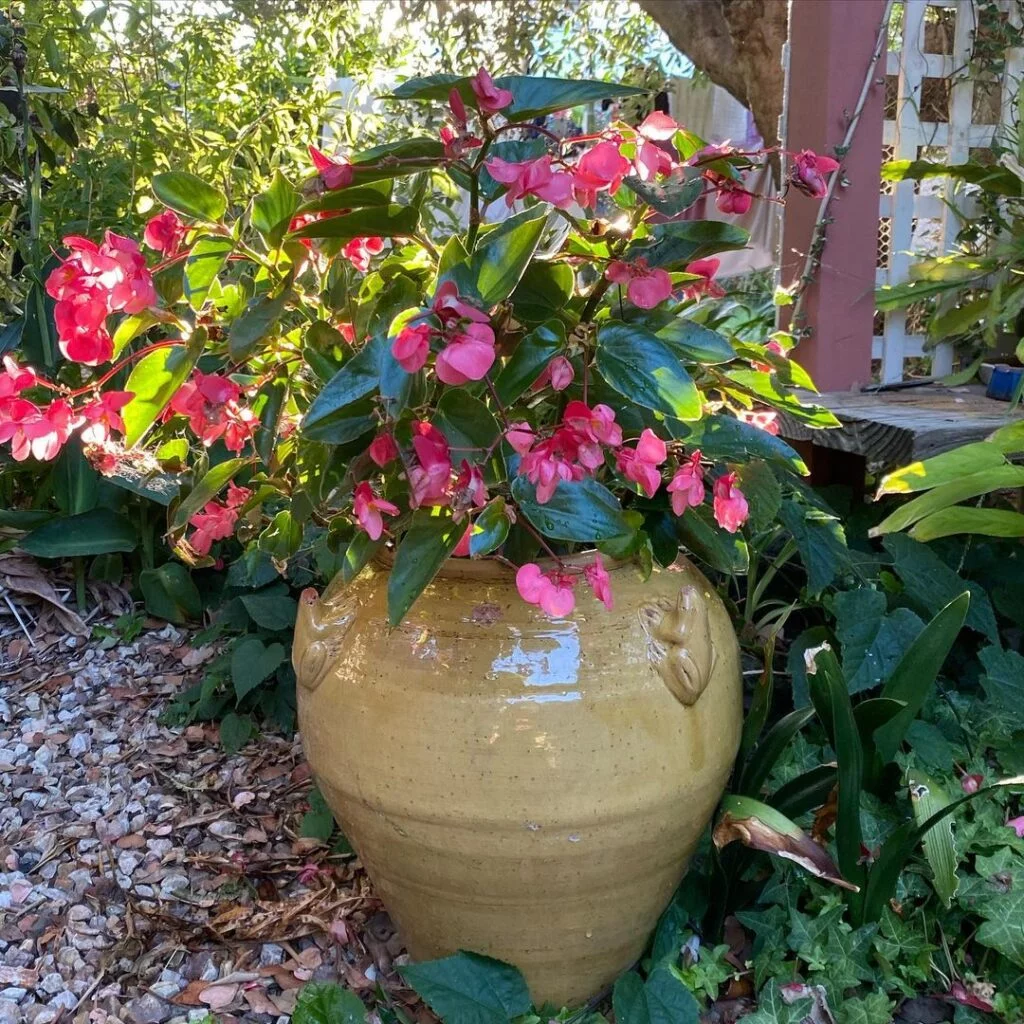

Maintaining a Dragon Wing Begonia doesn’t have to be complex. Here’s a quick care overview that sums up the key points for successful cultivation:
Care Snapshot:
- Light Requirements: Provide bright, indirect light for optimal growth, but protect the plant from harsh, direct sunlight.
- Soil Preferences: Use well-draining, slightly acidic soil enriched with organic matter.
- Watering: Keep the soil consistently moist, but avoid waterlogged conditions.
- Temperature: Maintain a temperature between 65-75°F (18-24°C) for the best growth.
- Fertilization: Feed with a balanced, water-soluble fertilizer every 4-6 weeks during the growing season.
- Pruning: Prune back tips to encourage bushier growth.
- Overwintering: For colder climates, overwinter indoors in a cool, dark place.
- Pest Control: Keep an eye out for common pests like aphids, mealybugs, and scale insects.
Quick Troubleshooting:
- Yellowing Leaves: Yellow leaves may indicate overwatering or insufficient light. Adjust the watering schedule and provide more light if needed.
- Leggy Growth: If your begonia is growing tall and sparse, consider more frequent pruning to promote bushiness.
Tip: Dragon Wing Begonia’s quick care requirements make it an ideal choice for gardeners of all experience levels. Its adaptability to various conditions and forgiving nature make it a delightful addition to any garden or indoor space.
Dragon Wing Begonia Light Requirements
Proper lighting is crucial for the health and appearance of your Dragon Wing Begonia. Let’s explore its light preferences in more detail:
Optimal Lighting Conditions:
- Indirect Light: Dragon Wing Begonias thrive in bright, indirect light. This mimics their natural habitat in the understory of tropical forests. Ensure they receive dappled or filtered sunlight.
- Avoid Direct Sun: While they can tolerate some morning sun, be cautious about exposing them to direct, harsh sunlight, as it can scorch the leaves.
Indoor Placement:
- North or East-Facing Windows: For indoor cultivation, place your begonia near north or east-facing windows, which provide the right balance of indirect sunlight.
- Artificial Lighting: If natural light is limited, consider using grow lights to supplement their light requirements, especially during the darker months.
Signs of Light Stress:
- Leggy Growth: If your Dragon Wing Begonia starts stretching toward the light source, it’s a sign that it needs more light.
- Leaf Discoloration: Too much direct sun can cause leaf burn, resulting in brown or crispy edges.
- Lack of Blooms: Insufficient light can lead to reduced flowering.
Tip: Pay attention to your plant’s response to its light conditions, and be prepared to adjust its placement if you notice any signs of light stress. Finding the right balance will help your Dragon Wing Begonia flourish.
Dragon Wing Begonia Soil Preferences
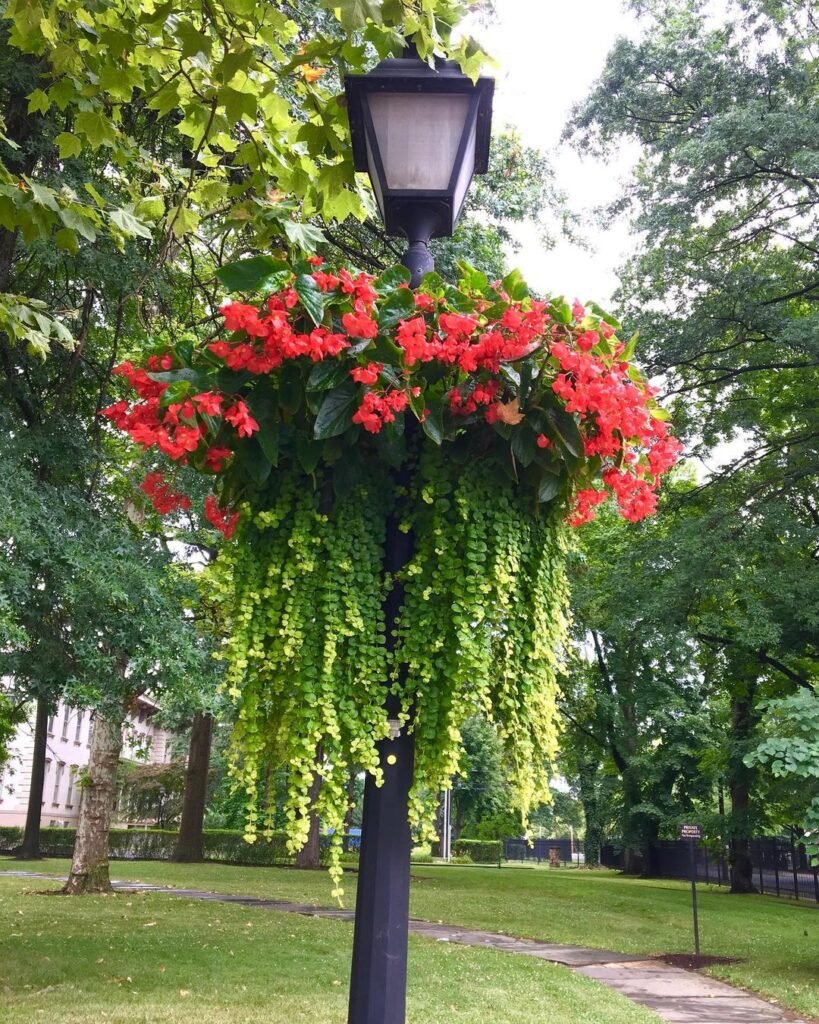
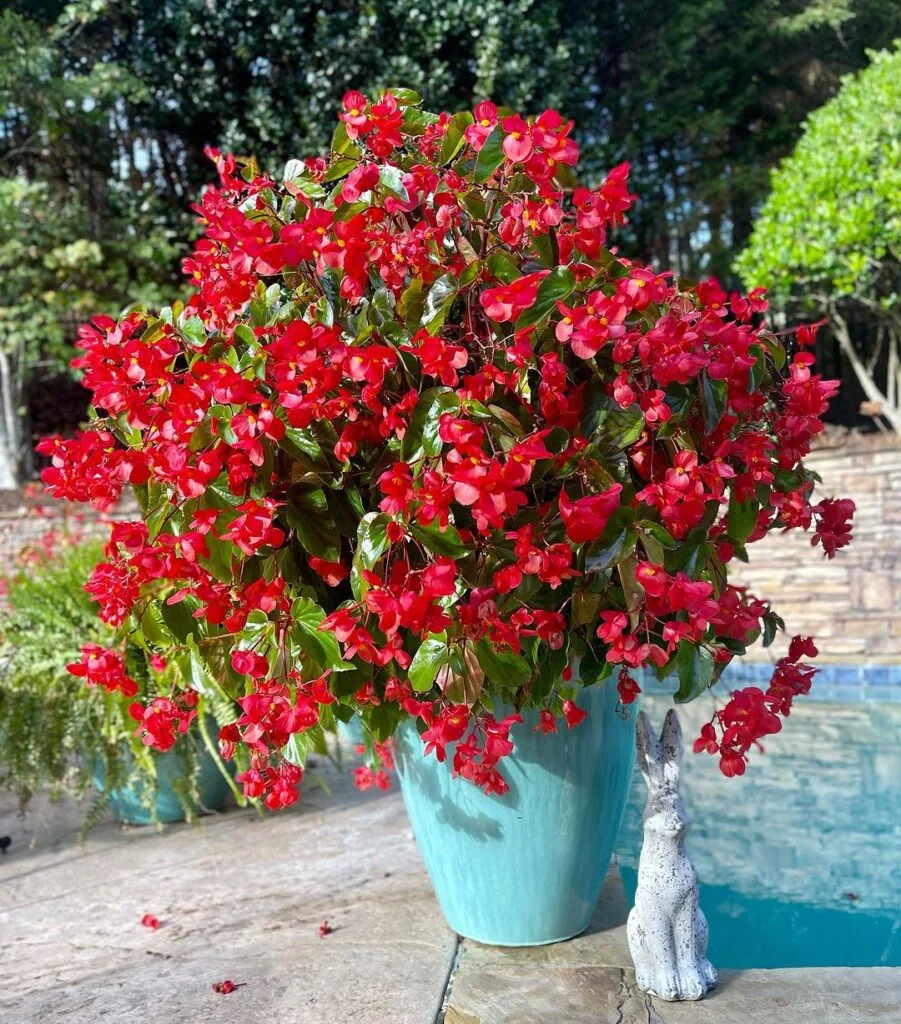
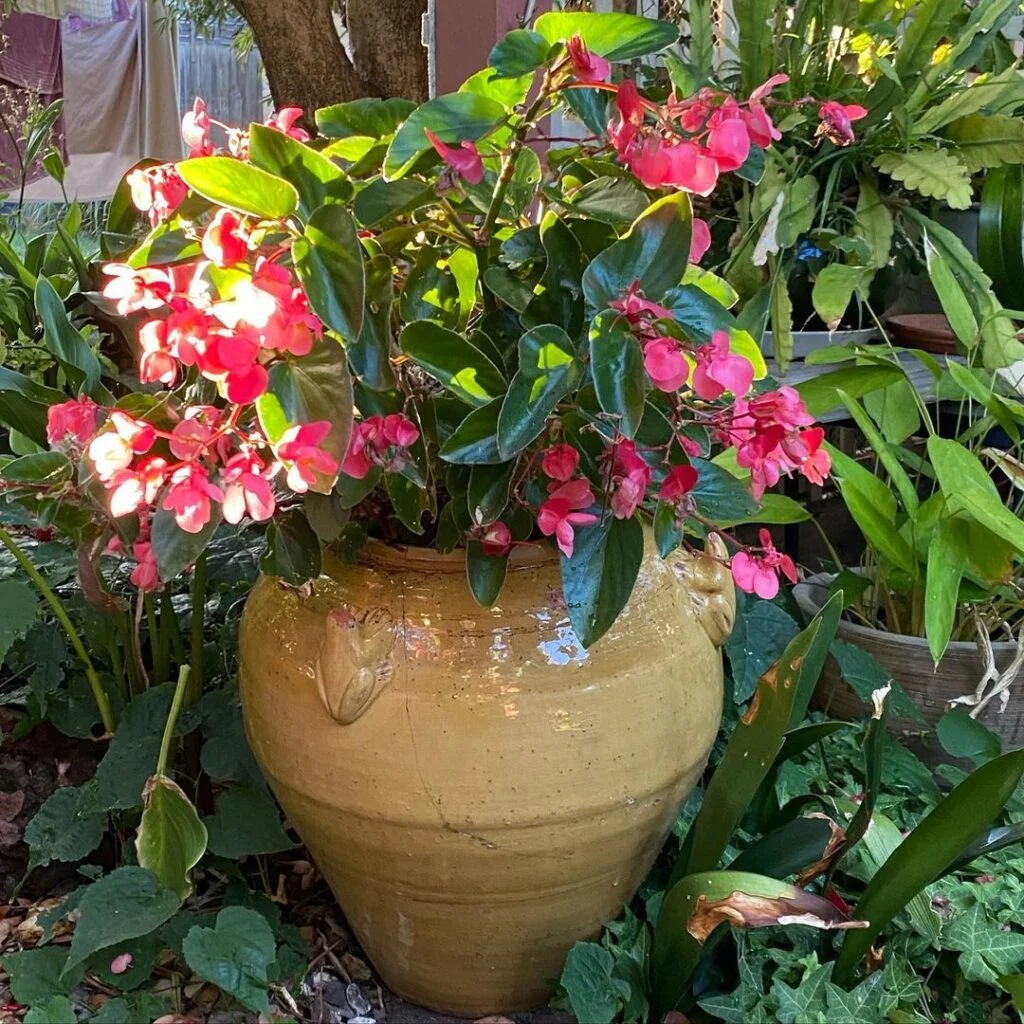
Understanding the soil requirements for Dragon Wing Begonia is vital to ensure the plant thrives. This begonia variety has specific preferences that contribute to its healthy growth and beautiful foliage. Let’s explore these soil requirements in detail:
Ideal Soil Characteristics:
- Well-Draining: Dragon Wing Begonias prefer soil that drains well to prevent waterlogged conditions, which can lead to root rot. Amending the soil with perlite or sand can improve drainage.
- Organic Matter: The soil should be rich in organic matter. Compost or well-rotted leaf mulch can be added to the planting hole or mixed into the soil to enhance its organic content.
- Acidic pH: Dragon Wing Begonias thrive in soil with a slightly acidic pH level, ideally between 5.5 to 6.5. You can test and adjust the pH as needed to create the right environment for your plant.
- Aeration: The soil should be well-aerated to allow the roots to breathe and absorb nutrients efficiently. Proper aeration can be achieved by adding organic matter and ensuring good drainage.
Container Soil Mix:
- For container planting, use a high-quality potting mix that meets the above criteria. A mix formulated for shade-loving plants is an excellent choice.
- Ensure the container has drainage holes to prevent water from pooling at the bottom.
Repotting: As your Dragon Wing Begonia grows, you may need to repot it. Choose a slightly larger container with fresh potting mix when it outgrows its current one.
Tip: To improve soil conditions, consider applying a slow-release balanced fertilizer to replenish nutrients that may become depleted over time.
Watering Dragon Wing Begonia
Proper watering is crucial for the health and well-being of Dragon Wing Begonia. Understanding its specific water requirements is essential to prevent overwatering or underwatering, both of which can harm the plant.
Watering Guidelines:
- Consistent Moisture: Dragon Wing Begonias prefer consistently moist soil. Water the plant when the top inch of the soil feels dry to the touch. Be attentive but avoid letting the plant sit in soggy soil.
- Avoid Overwatering: Overwatering can lead to root rot and other fungal issues. Make sure the pot or planting area has good drainage.
- Watering Techniques: Water at the base of the plant to keep the foliage dry. Avoid splashing water on the leaves, as this can lead to fungal diseases.
- Rainwater: If possible, use rainwater or distilled water to avoid the buildup of mineral salts in the soil, which can harm the plant over time.
- Outdoor Care: In outdoor settings, natural rainfall may be sufficient. Monitor the soil and water only if it becomes dry.
Tip: Grouping your Dragon Wing Begonia with other plants can create a more humid microenvironment, reducing the need for frequent watering.
Signs of Overwatering:
- Yellowing leaves with brown spots.
- Wilting, despite the soil being consistently moist.
Signs of Underwatering:
- Dry, shriveled leaves.
- Leaf drop and reduced growth.
Tip: To help maintain proper soil moisture, consider applying a layer of mulch around the base of the plant. This will help retain moisture and reduce water evaporation.
Dragon Wing Begonia Humidity Requirements
Understanding and managing humidity is another key aspect of Dragon Wing Begonia care, especially if you’re growing them indoors or in a dry climate. Maintaining the right humidity levels can significantly impact the plant’s health and appearance.
Humidity Preferences:
- Moderate to High Humidity: Dragon Wing Begonias prefer a humid environment, ideally with humidity levels between 50% to 60% or higher. This mimics their native tropical habitat.
- Indoor Humidification: If you’re growing Dragon Wing Begonias indoors, consider using a humidifier or placing a tray of water near the plant to increase humidity levels. Regular misting can also help.
- Outdoor Placement: If you’re growing them outdoors, choose a spot with some natural humidity, such as near a pond or other water source.
Signs of Low Humidity Stress:
- Dry, crispy leaf edges.
- Leaf drop.
- Reduced flowering.
Sub-Optimal Solutions:
- Grouping your begonias together can create a microenvironment with higher humidity levels.
- Use a humidity tray: Place a shallow tray filled with water and pebbles near your begonias. As the water evaporates, it increases the local humidity.
- Place a plastic dome or cloche over the plant to create a mini greenhouse effect.
Tip: Consistent humidity is essential for the overall health and vitality of your Dragon Wing Begonia. Regularly monitor the humidity levels, especially in indoor environments, to ensure a thriving plant.
Dragon Wing Begonia Temperature Requirements
Understanding the temperature needs of your Dragon Wing Begonia is crucial for its well-being. This begonia variety is sensitive to temperature changes and has specific preferences that influence its growth and flowering.
Temperature Preferences:
- Ideal Range: Dragon Wing Begonias thrive in a temperature range of 65-75°F (18-24°C). This range closely simulates their native tropical environments.
- Avoid Extreme Heat: Protect the plant from excessive heat, as temperatures above 85°F (29°C) can stress the begonia and lead to wilting and reduced flowering.
- Frost Sensitivity: Dragon Wing Begonias are frost-tender, so if you live in a region with cold winters, bring them indoors before the first frost.
Indoor Temperature Control:
- Ensure a consistent indoor temperature for your Dragon Wing Begonia by avoiding drafts and sudden temperature fluctuations.
- If you’re growing begonias indoors, maintain an ambient temperature within the recommended range. Avoid placing them near heating vents or radiators, as this can lead to overheating.
Outdoor Protection: In outdoor gardens, provide shade during the hottest part of the day to shield your begonias from intense sunlight and heat.
Tip: In cooler conditions, Dragon Wing Begonia can tolerate slightly lower temperatures. However, in colder climates, it’s advisable to bring them indoors during the winter months to prevent cold damage.
Fertilizing Dragon Wing Begonia
Proper fertilization is essential for the growth and flowering of Dragon Wing Begonia. Providing the right nutrients in the correct amounts is crucial for its health and vibrancy.
Fertilization Guidelines:
- Balanced Fertilizer: Use a balanced, water-soluble fertilizer with an NPK ratio of 10-10-10 or 20-20-20. This ensures your plant receives a well-rounded mix of essential nutrients.
- Frequency: Fertilize your Dragon Wing Begonia every 4-6 weeks during the growing season, which typically spans from spring to early fall. Reduce or cease fertilization during the winter months when the plant is in a dormant state.
- Dilution: Follow the manufacturer’s instructions for dilution rates, as over-fertilizing can lead to nutrient imbalances and potential damage to the plant.
Organic Fertilizers: If you prefer organic options, you can use a balanced, organic fertilizer that is suitable for flowering plants. Organic options release nutrients more gradually and may benefit your begonia.
Tip: To encourage vigorous flowering, you can use a fertilizer with a higher phosphorus (P) content. Phosphorus promotes flower and root development.
Signs of Nutrient Deficiency:
- Yellowing leaves.
- Stunted growth.
- Reduced flowering.
Fertilizing Calendar:
| Month | Fertilization Schedule |
|---|---|
| Early Spring | Start with the first application as new growth emerges. |
| Late Spring | Apply a second round of fertilizer. |
| Early Summer | Continue with the third application. |
| Early Fall | The fourth application before the growing season ends. |
Tip: Maintain a consistent fertilizing schedule to provide your Dragon Wing Begonia with the necessary nutrients throughout its growing season.
Dragon Wing Begonia Pruning and Shaping
Pruning and shaping your Dragon Wing Begonia is an essential aspect of its care. Properly managed growth not only enhances the plant’s appearance but also promotes overall health.
Pruning and Shaping Techniques:
- Deadheading: Remove spent flowers by pinching them off at the base. This encourages the plant to redirect energy into new flower production.
- Pinching: Pinch back the tips of your begonia to encourage bushier growth. This can be done when the plant has grown to a desired height.
- Stem Removal: If you notice tall, leggy stems with sparse foliage, consider cutting them back to promote a more compact shape.
- Selective Pruning: Remove any damaged or yellowing leaves and stems. This helps maintain a tidy appearance and prevents the spread of disease.
Regular Maintenance: Perform pruning and shaping on a regular basis to manage the size and shape of your Dragon Wing Begonia. It can be particularly useful if you’re growing them in containers or limited spaces.
Tip: When pruning, use sharp, clean shears or scissors to make clean cuts. Ensure proper sanitation to prevent the spread of diseases from one plant to another. Pruning and shaping can be done during the growing season as needed.
Dragon Wing Begonia Propagation Tips
Propagating Dragon Wing Begonias allows you to expand your collection or share this beautiful plant with others. There are several methods to propagate these begonias successfully, each with its own advantages and challenges.
Propagation Methods:
- Stem Cuttings: This is the most common method for propagating Dragon Wing Begonias. Follow these steps for success:
- Choose a healthy stem with at least two leaf nodes.
- Cut the stem just below a leaf node and remove any flowers.
- Plant the cutting in a well-draining potting mix and keep it consistently moist.
- Place the cutting in a warm, humid environment until roots develop, usually in a few weeks.
- Division: If your begonia has multiple stems, you can carefully divide the plant by separating the stems and their attached roots. Each divided section can become a new plant.
- Leaf Cuttings: While less common, you can also propagate Dragon Wing Begonias from individual leaves:
- Select a healthy leaf and cut it into smaller sections, ensuring that each section has a vein.
- Plant the leaf sections in a soilless mix, keeping them consistently moist.
- Roots and new shoots should develop within a few weeks.
Propagation Tips:
- Propagation is best done during the active growing season in spring or early summer when the plant is most robust.
- Use a rooting hormone to increase the success rate of your cuttings.
Tip: Keep newly propagated begonias in a warm, humid environment to encourage root and shoot development. A plastic dome or clear plastic bag can create a mini-greenhouse effect to maintain humidity.
Repotting Dragon Wing Begonia Tips
As your Dragon Wing Begonia grows, it may outgrow its current container, or its soil may become depleted. Repotting is a necessary step to ensure the plant continues to thrive and remains healthy.
Signs It’s Time to Repot:
- The plant is root-bound, with roots circling the pot’s edges and emerging from the drainage holes.
- The plant shows signs of stress, such as wilting, despite adequate care.
- The soil has become compacted and is not draining properly.
Steps for Repotting:
- Choose a New Container: Select a slightly larger pot with drainage holes to accommodate the growing plant.
- Prepare the Plant: Gently remove the begonia from its current container, being careful not to damage the roots.
- Trim and Prune: Trim any overgrown or damaged roots and prune back any leggy growth to maintain the desired shape.
- Add Fresh Soil: Fill the new container with a well-draining, slightly acidic potting mix.
- Plant Carefully: Position the begonia in the new pot, ensuring the top of the root ball is at the same level as it was in the old container.
- Water Thoroughly: After repotting, water the plant generously to settle the soil and hydrate the roots.
Repotting Frequency: Dragon Wing Begonias typically benefit from repotting every 2-3 years. However, if you notice rapid growth and root congestion, you may need to repot more frequently.
Tip: To avoid stress, it’s best to repot your Dragon Wing Begonia during the growing season, preferably in spring or early summer. This gives the plant time to recover and establish itself in its new container before the dormant period in winter.
Dragon Wing Begonia Seasonal Care
Understanding how to care for your Dragon Wing Begonia throughout the seasons is vital to ensure its health and beauty year-round. These plants have distinct needs that change as the weather and light conditions shift.
Spring Care:
- In spring, your begonia will start its active growing season. Prune back any leggy growth and perform any necessary repotting during this time.
- As temperatures rise, monitor the plant for signs of heat stress. Protect it from direct, harsh sunlight.
Summer Care:
- Continue to provide consistent moisture and maintain humidity levels, especially if you live in a dry climate.
- Apply a balanced, water-soluble fertilizer every 4-6 weeks to support ongoing growth and flowering.
Fall Care:
- As temperatures cool, reduce fertilization to prepare the plant for its dormant period.
- Monitor humidity levels as indoor heating systems can dry the air, affecting your begonia’s health.
Winter Care:
- If you live in an area with mild winters, you can keep your Dragon Wing Begonia outdoors. Provide protection from frost.
- In colder climates, bring the plant indoors before the first frost. Reduce watering and allow the plant to go dormant in a cool, dark place with temperatures between 45-55°F (7-13°C).
Tip: Monitoring your Dragon Wing Begonia’s specific needs and adjusting care routines according to the season will help maintain its vibrant health and appearance year-round.
Dragon Wing Begonia Companion Plants
Selecting the right companion plants for your Dragon Wing Begonia can enhance the overall aesthetic of your garden or indoor space while promoting healthy growth and pest resistance. Here are some great companion plant choices to consider:
**1. Coleus (Plectranthus scutellarioides): These colorful, shade-loving plants complement Dragon Wing Begonia’s foliage beautifully. Coleus comes in various shades, making it easy to find a combination that suits your preferences.
**2. Fuchsia (Fuchsia spp.): Fuchsia’s pendulous, tubular flowers add an elegant touch when planted alongside Dragon Wing Begonia. Both plants thrive in similar conditions and create a vibrant display.
**3. Impatiens (Impatiens walleriana): Impatiens are another shade-loving option with a wide array of flower colors. They pair well with Dragon Wing Begonias in containers or flower beds.
**4. Hosta (Hosta spp.): Hostas are excellent ground cover plants for shaded areas. Their contrasting foliage and varying sizes make them a versatile choice alongside begonias.
**5. Brunnera (Brunnera macrophylla): The silvery, heart-shaped leaves of Brunnera add contrast to Dragon Wing Begonia’s green foliage, creating an eye-catching combination.
**6. Bleeding Heart (Dicentra spectabilis): Bleeding hearts with their unique, dainty flowers make a charming complement to Dragon Wing Begonias in a shade garden.
Tip: When choosing companion plants, consider their light and moisture requirements to ensure they are compatible with your begonias. Additionally, combining different heights and textures can create a visually appealing landscape.
Pest Control Tips for Dragon Wing Begonia
While Dragon Wing Begonias are relatively low-maintenance, they can still be susceptible to common garden pests. Understanding how to identify and control these pests is crucial to maintaining the plant’s health and appearance.
Common Pests:
- Aphids: These small, soft-bodied insects feed on plant sap and can cause leaves to curl and become sticky with honeydew.
- Mealybugs: Mealybugs are small, white, cottony insects that feed on plant sap. They can be found on leaves, stems, and undersides of leaves.
- Scale Insects: Scale insects look like small, waxy bumps on stems and leaves. They can weaken the plant by sapping its nutrients.
Pest Control Methods:
- Hand-Picking: Inspect your begonia regularly and manually remove pests when spotted. Use a cotton swab dipped in rubbing alcohol to remove stubborn mealybugs and scale insects.
- Neem Oil: Apply neem oil as a natural pesticide to deter and control common garden pests. Dilute the oil according to the manufacturer’s instructions.
- Horticultural Soap: Use insecticidal soap to treat soft-bodied pests like aphids and mealybugs. Follow the product’s directions for application.
- Biological Control: Introduce natural predators like ladybugs or lacewings to your garden, as they feed on aphids and other small insects.
- Isolation: If you notice a severe infestation, isolate the affected begonia to prevent pests from spreading to other plants.
Preventive Measures:
- Regularly inspect your plants for signs of pests and take action promptly.
- Quarantine new plants before introducing them to your garden to prevent potential pest infestations.
Tip: An effective and organic method for preventing pests is to maintain a healthy growing environment for your Dragon Wing Begonia. Healthy plants are less susceptible to infestations.
Dragon Wing Begonia Common Problems
Even with proper care, Dragon Wing Begonias can face challenges. Being aware of common issues and knowing how to address them is essential for maintaining the health and vibrancy of your plants.
Common Problems:
- Yellowing Leaves: Yellowing leaves can be a sign of overwatering, underwatering, nutrient deficiency, or poor drainage.
- Leggy Growth: Tall, sparse stems may result from inadequate light or lack of pruning.
- Disease: Fungal diseases, such as powdery mildew, can occur in high humidity conditions.
Addressing Common Problems:
- Yellowing Leaves: Adjust your watering schedule, ensure proper drainage, and consider repotting if root congestion is an issue.
- Leggy Growth: Provide adequate, indirect light, and regularly prune to encourage bushier growth.
- Disease Control: Improve air circulation around the plant, avoid overhead watering, and treat fungal diseases with appropriate fungicides.
Regular Maintenance: Consistent monitoring and care adjustments are key to addressing and preventing common problems. Make a habit of inspecting your Dragon Wing Begonias to catch issues early.
Tip: When in doubt about a specific issue, consult with local gardening experts or your nearest nursery for guidance on addressing and preventing common problems with your begonias.
Reviving a Sick or Wilting Dragon Wing Begonia
If your Dragon Wing Begonia is showing signs of stress, such as wilting or yellowing leaves, it’s essential to take prompt action to revive it and restore its health. Here are steps you can take to address common issues and nurse your plant back to vitality:
Assess the Problem:
- Check Soil Moisture: Ensure that you’re not overwatering or underwatering your begonia. Adjust the watering schedule accordingly.
- Inspect Light Conditions: Verify that your plant is receiving the right amount of light. Adjust its placement if it’s getting too much or too little sunlight.
- Examine Drainage: Ensure that the container has proper drainage, preventing waterlogging.
Addressing the Issue:
- If the plant is overwatered, allow the soil to dry out slightly before resuming regular watering. Trim away any yellow or rotting roots.
- For underwatered plants, thoroughly water the begonia and monitor it closely. Consider increasing humidity around the plant.
- If the plant’s light conditions are suboptimal, relocate it to a spot with better lighting. Gradually acclimate it to avoid stress.
Pruning: Trim away any yellow or damaged leaves, stems, or flowers to encourage new growth.
Fertilization: Apply a balanced, water-soluble fertilizer following the recommended schedule to replenish nutrients.
Increase Humidity: If you suspect dry air is the problem, use a humidifier or humidity tray to raise moisture levels around the plant.
Repotting: If root congestion is an issue, repot your begonia into fresh soil and a slightly larger container.
Tip: Consistent monitoring and early intervention are key to reviving a sick or wilting Dragon Wing Begonia. Pay close attention to the plant’s specific needs and provide appropriate care to help it recover.
Love all types of Begonia? Make sure to catch up on my post on Growing Tuberous Begonias Indoors & Outdoors: Complete Care Guide. After you’ve finished reading that, why not also check out my article on Mastering Strawberry Begonia Care: Tips for Lush Foliage.
FAQs (Frequently Asked Questions)
Can Dragon Wing Begonias be grown indoors?
Yes, Dragon Wing Begonias can be grown indoors as long as they receive bright, indirect light. North or east-facing windows are ideal spots for indoor cultivation.
How often should I fertilize my Dragon Wing Begonia?
Fertilize your begonia every 4-6 weeks during the growing season (spring to early fall) with a balanced, water-soluble fertilizer.
Can I grow Dragon Wing Begonias from seeds?
While it’s possible to grow Dragon Wing Begonias from seeds, it’s a more time-consuming process. It’s generally easier and more common to propagate them from stem or leaf cuttings.
How can I encourage more blooms on my Dragon Wing Begonia?
To promote more flowering, use a fertilizer with a higher phosphorus (P) content. Regular deadheading (removing spent flowers) and pruning can also encourage new blooms.
Are Dragon Wing Begonias toxic to pets?
Yes, Dragon Wing Begonias can be toxic to pets if ingested. It’s essential to keep them out of reach of pets and ensure your furry friends can’t access them.
What’s the difference between Dragon Wing Begonias and other begonia varieties?
Dragon Wing Begonias are known for their large, wing-shaped leaves and prolific, pendulous red or pink flowers. Other begonia varieties may have different leaf shapes, sizes, and flower colors.
Conclusion
In conclusion, Dragon Wing Begonias are a stunning addition to any garden or indoor space, known for their vibrant foliage and prolific flowering. By understanding their specific care requirements, including light, water, soil, temperature, and humidity preferences, you can cultivate healthy and beautiful begonias.
Additionally, selecting suitable companion plants, addressing common issues, and knowing how to propagate and repot your Dragon Wing Begonias are key aspects of successful care and maintenance.
Remember to stay vigilant, monitor your plants regularly, and provide the care they need to ensure they thrive. Whether you’re a seasoned gardener or a beginner, Dragon Wing Begonias are a delightful choice that can bring beauty and elegance to your garden or living space.

Writer/Green Thumb/Explorer – Rooted deep in the rich soils of Devon, I’ve cultivated a vast expertise in plant care, helping greenery thrive in homes across the UK. When I’m not crafting detailed plant care guides, I’m journeying through the lush landscapes of the West Country, unearthing nature’s secrets and sharing them with fellow plant enthusiasts. Every leaf has a story, and I’m here to tell it.





